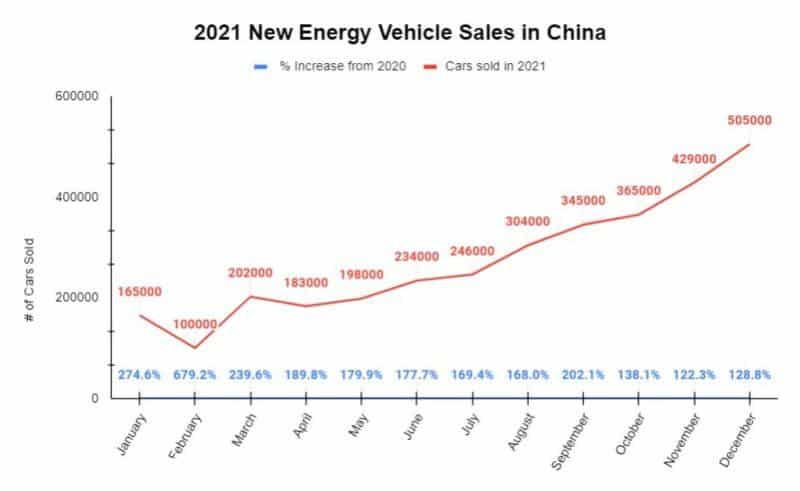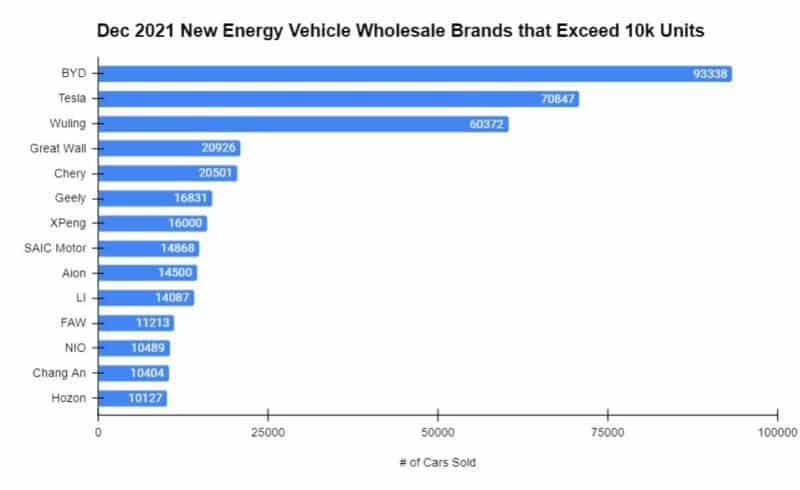New energy vehicle sales in China were growing in 2021 at a very fast rate and it is predicted that this trend will continue in 2022. According to CPCA, the annual sales of electric vehicles is predicted to exceed 5 million units in 2022 and 7-10 million units in 2025. By then, China’s installed battery capacity will be the largest in the world at 600GWh.
From January to December 2021, China’s new energy vehicle sale reached 3.52 million units.
In 2009, China surpassed the United States to become the world’s largest market for vehicles with the largest number of electric vehicle presence than anywhere else in the world as an attempt to combat climate change. According to UBS, three in five new cars that go on China’s roads may be powered by electricity instead of fossil fuel in 2030.
The Chinese government coined the term new energy vehicles (NEVs) to designate vehicles eligible for public subsidies including battery electric, plug-in hybrid, and fuel cell vehicles.

In December 2021, new energy vehicle wholesale reached 505,000 units. That is an 138.9% increase compared to December 2020.
More specifically, sales were dominated by 14 brands: BYD – 93,338 units, Tesla – 70,847 units, Wuling – 60,372 units, Great Wall – 20,926 units, Chery – 20,501 units, Geely – 16,831 units, SAIC Motor – 14,868 units, Aion – 14,500 units, FAW – 11,213 units, Chang An – 10,404 units, and Hozon – 10,127 units.
Among the newer automaker players, NIO, XPeng, and Li Auto sold 10,487, 16,000, and 14,087 vehicles, respectively.

Subsidies Decreased by 30%
According to China’s Ministry of Finance, subsidies for new energy vehicle purchases in 2022 will decrease by 30% from 2021 and that subsidy will be discontinued starting in 2023. Due to this, recent sales in the new energy vehicle market has increased since consumers are using the subsidies while they are still effective.
Chip Shortage Challenge
With recent technological breakthroughs in fast-growing industries like 5G, cloud computing, artificial intelligence, and self-driving & electric vehicles, the long-term demand for semiconductors is increasing. It is predicted that the supply chain issue caused by chip shortage will continue until mid or even the second half of 2022. For automakers that manufacture new energy vehicles, it would be beneficial to collaborate with chip manufacturers to optimize supply chain management to minimize disruption and increase resilience.
Source: autohome, CPCA, UBS, jrj, OFweek

